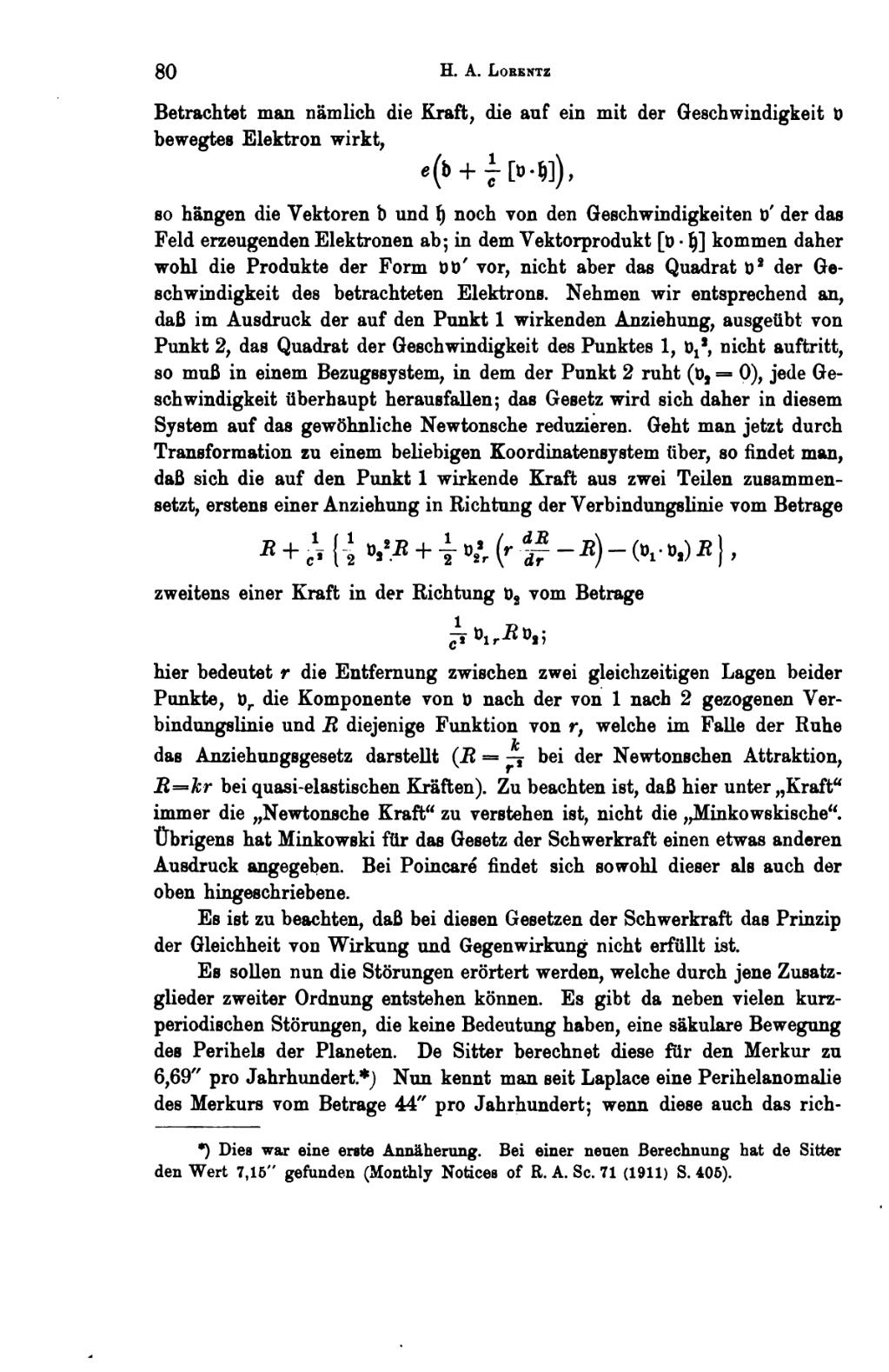If one namely considers the force acting upon an electron moving with velocity :
then the vectors and also depend on velocities of the electrons generating the field; therefore, in the vector product there indeed arise products of the form , yet not the square of the speed of the considered electron. If we accordingly assume, that the square of the velocity of point 1 doesn't occur in the expression of the attraction acting upon point 1 and exerted by point 2, then this velocity must entirely drop in a reference system in which point 2 is at rest ; the law in this system thus will be reduced to the ordinary Newtonian one. If one now passes to an arbitrary coordinate system by transformation, then one finds that the force acting upon point 1 is composed of two parts, first an attraction in the direction of the connecting line of amount
second a force in the direction of amount
here, means the distance between two simultaneous points, the component of towards the connection line drawn from 1 to 2, and that function of which represents the attraction law in the case of rest ( at Newtonian attraction, at quasi-elastic forces). It is to be noticed, that under force we always have to understand the "Newtonian force", not the Minkowski force. Incidentally, Minkowski has given a somewhat different expression than this one. In Poincaré's paper, both this one and also the one written above can be found.
It is to be noticed, that the principle of equality of action and reaction is not satisfied in these laws of gravitation.
Now, the disturbances shall be discussed, which can arise by those supplementary terms of second order. Besides many short-periodic disturbances of no importance, there is a secular motion of the perihelion of the planets. De Sitter calculates, that it amounts to 6,69" per century.[1] Now, the perihelion anomaly of mercury of amount 44" per century is known since Laplace; although it has the correct
- ↑ This was a first approximation. By a new calculation, de Sitter found the value 7,15". (Monthly Notices of R. A. Sc. 71 (1911), p. 405).

![{\displaystyle e\left({\mathfrak {d}}+{\frac {1}{c}}[{\mathfrak {v}}\cdot {\mathfrak {h}}]\right){,}}](https://wikimedia.org/api/rest_v1/media/math/render/svg/cc1c5f6c11a49f929969a8d8c67ae7d7577c2a02)



![{\displaystyle [{\mathfrak {v}}\cdot {\mathfrak {h}}]}](https://wikimedia.org/api/rest_v1/media/math/render/svg/9ede673d4a902107ffe68cc0ed42b3ebce7e40fc)












